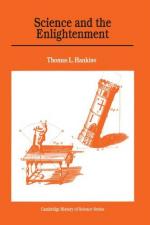
|
| Name: _________________________ | Period: ___________________ |
This quiz consists of 5 multiple choice and 5 short answer questions through Chapter 5, Natural History and Physiology.
Multiple Choice Questions
1. From ________'s law of falling bodies, it was known that the heights would be proportional to the squares of the velocities at impact.
(a) Voltaire.
(b) Descartes.
(c) Poleni.
(d) Galileo.
2. In Chapter 3, whose book described demonstration experiments and gave detailed instructions for making and using the apparatus, but unlike the Dutch physicists, he attempted to create a single rational systematic philosophy, after the model of Leibniz?
(a) Desaguliers.
(b) 'sGravesande.
(c) Chatelet.
(d) Wolff.
3. In Chapter 5, ________ and ________ found freshwater worms regenerated in the same fashion, and since worms were definitely animals, previous doubts about the animality of the polyp lost their force.
(a) Trembley / Hertwig.
(b) La Mettrie / Diderot.
(c) Reaumur / Bonnet.
(d) Leeuwenhoek / Hartsoeker.
4. The narrator reveals that vis viva was a measure of ________ to conserve his creation while "action" was a measure of his efficiency.
(a) God's desire.
(b) Man's desire.
(c) God's demeanor.
(d) Man's passion.
5. What was the name of the philosopher who carried out the following experiments: kite, electric spider, and lightning bells to study electricity?
(a) Benjamin Franklin.
(b) Abbe Jean Antoine Nollet.
(c) Stephen Gray.
(d) The Jesuits.
Short Answer Questions
1. In Chapter 5, who analyzed the mechanics of the muscles and skeleton of the human body and tried to explain muscular contraction as a hydraulic or mechanical inflation of the tissue?
2. ________'s emphasis on the repulsive or expansive property of air, led naturally to an emphasis on the expansive properties of the even more subtle fluids of heat and electricity.
3. All of the following philosophers at the University of Leiden followed Newton's lead in organizing experiments except for whom?
4. Who became the ablest and most productive mathematician of the eighteenth century, according to the narrator in Chapter 2?
5. In Chapter 2, who was the greatest analyst of the Enlightenment and created mathematical theories to predict the buckling of columns and beams?
|
This section contains 305 words (approx. 2 pages at 300 words per page) |

|




